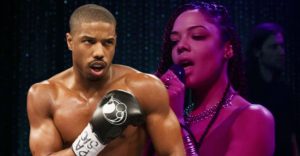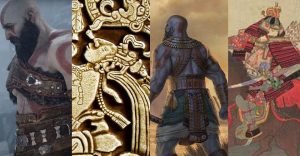Rogue One & Mandalorian Show Where Disney’s Star Wars Sequels Went Wrong

The least divisive entries in the Star Wars franchise under Disney’s reign, Rogue One: A Star Wars Story and The Mandalorian, show where the sequel trilogy went wrong. Star Wars’ sequel trilogy played out like a tug of war between directors J. J. Abrams and Rian Johnson, with the fanbase caught in the middle; seemingly hurling retcons back and forth until nobody could agree what worked and what didn’t.
On the whole, critics agree that Abrams played it too safe when making Star Wars: The Force Awakens, copying many elements from the original trilogy, while Johnson’s Star Wars: The Last Jedi, on the other hand, was perhaps too radical – forcefully thrusting the franchise in a bold new direction – and polarized many fans as a result. Faced with a divided fanbase, closing out the trilogy was always going to be tough – so, naturally, Disney re-hired Abrams to perform damage control. The resulting movie, Star Wars: The Rise of Skywalker, is in contention for the worst film in the entire franchise (including the much-maligned prequel trilogy) and failed to please ever: the cinematic equivalent of fence-sitting.
Gareth Edwards’ Rogue One: A Star Wars Story and Jon Favreau’s The Mandalorian, however, managed to sidestep most of this controversy – presenting stories within the Star Wars universe that the majority of fans could get behind. The Mandalorian, in particular, is often cited as the best thing to come out of the Disney-era thus far; driving Disney+ subscriptions and continuing to please, deep into season 2. All of which begs the question: how did Rogue One and The Mandalorian succeed where the sequel trilogy failed?
Disney’s Star Wars Sequels Lacked Confidence In Their New Heroes

Star Wars: The Force Awakens introduced a new group of heroes, but utilized legacy characters – Leia, Luke, and Han – as a safety blanket to encourage older fans to return to the franchise. These characters already had satisfying arcs in the original trilogy and fans were satisfied with where they ended up, so any new stories would risk erasing their original character arc for one that was less satisfying for some viewers. Instead of providing the safety blanket, Disney desired, the inclusion of major legacy characters primed the sequel trilogy for backlash – reducing the impact and screentime of new, more interesting characters in the process.
Of all of the major characters, Finn was the most impacted – pushed into the background, despite having the most potential to go on an engaging journey. His character arc remains – a First Order soldier who becomes a hero of the rebellion – but is told in broad strokes; sidelined in favor of more recognizable, original trilogy characters and call-backs that do little to push the franchise forward. The last-ditch effort to relate Rey and Palpatine is also symptomatic of Disney’s waning confidence in their new hero, scrambling to connect her to the original trilogy and, thus, be deemed “worthy” as the sequel trilogy’s central protagonist.
The Sequel Trilogy’s Most Divisive Elements Involved Legacy Characters

As stated, the inclusion of major legacy characters was always going to prove controversial, given their heightened status within popular culture, and unsurprisingly many of the sequel trilogy’s most divisive elements involved legacy characters. These issues range from major plot points to smaller tonal inconsistencies. Han’s death in Star Wars: The Force Awakens was probably the least offensive inclusion, likely owing to his minimal screentime and little effort being made to slap a new arc onto his character, but proved controversial nonetheless. Luke drinking alien sea-cow milk (and his whole arc in general) in Star Wars: The Last Jedi was said to undermine his character, while Leia’s sudden, previously unestablished (to that extent) force-powers felt like Johnson was jumping the shark.
Despite its flaws, Star Wars: The Last Jedi and Johnson actually had the right idea with the theme of “killing the past”. Had this been the central theme of the sequel trilogy, they might have pulled it off, but – as it stands – The Last Jedi is a subversive middle chapter, sandwiched between two slavish homage-machines. In the second act of a story, traditionally, the stakes are raised – culminating in a low moment for the hero, and often resulting in the death of a major character. Luke takes this fall in The Last Jedi but does so heroically – winning the films’ climactic battle instead of the new heroes and thus undermines Johnson’s forward-looking theme. Luke’s death (go-figure) also proved controversial.
As for Star Wars: The Rise of Skywalker, its divisive elements are bigger and wackier than before; namely, resurrecting Palpatine and connecting him to Rey, with no hints made towards his presence in either The Force Awakens or The Last Jedi. To be fair, Johnson’s film already killed off the established villain, Snoke, quite unceremoniously – and it was becoming incredibly obvious that Kylo Ren would redeem himself in the end, requiring a bigger villain for the heroes to conquer. Still, Palpatine felt very tacked-on; his relationship with Rey playing out like bad fanfiction, and culminated in the “Rey Skywalker” name reveal that launched a million memes. While the scene has merit in concept, the execution of the scene might as well have had Daisy Ridley winking down the lens.
Solo Played It Safe – And Disappointed At The Box Office

It’s not difficult to understand why Disney dropped the ball in terms of Star Wars. The Force Awakens was successful, as was the prequel Rogue One, and then The Last Jedi threw a spanner in the works. While Johnson’s film received critical acclaim, surpassing Disney’s previous Star Wars efforts, it polarized fans. As such, Solo: A Star Wars Story was an effort to appease longtime viewers; its plot concerning legacy character Han Solo in a prequel that didn’t challenge any established canon.
As a result, Solo is frightfully dull and suffers in the same areas that most prequels do. It didn’t contain any big, controversial moments like The Last Jedi or (later) The Rise of Skywalker, but rather mired itself in fanservice; and bland fanservice, at that. Were audiences really dying to know where Han Solo got his name from? The idea of seeing a young Han, Chewie, and Lando pulling heists in the Falcon sounds interesting on paper but failed to meet that promise on the screen. Solo was, unsurprisingly, a box-office disappointment, leaving Disney to scratch their heads. If The Force Awakens and Solo were too safe, and The Last Jedi was too bold, where exactly was the middle ground? And would a middle-of-the-road approach actually result in a good product?
Why Rogue One and The Mandalorian Succeeded

First off, neither Rogue One: A Star Wars Story or The Mandalorian have, thus far, taken a particularly “bold” or new approach to the franchise – utilizing and re-purposing elements and imagery from the original trilogy to tell new stories, largely free from controversial elements, yet they avoid falling into the bland retread seen in other films. Rogue One is a prequel to the original Star Wars and follows a group of rebels trying to steal the Death Star plans. The Mandalorian is a space western which follows two characters who happen to resemble fan favorites from the original trilogy – Boba Fett and Yoda – with some minor tweaks. Neither premise is particularly out-there, given what the franchise has already established, but both have succeeded for a very specific reason: namely, that they primarily feature new characters, rather than filling in the backstory or unnaturally prolonging the narrative lives of major legacy characters.
Rogue One: A Star Wars Story focused on Jyn Erso – the daughter of an Imperial scientist – and her rag-tag team of rebels. As a prequel, Rogue One couldn’t do anything to alter the previously established events, so decided to go underneath them; telling an adjacent story featuring a new cast that ends with their willing sacrifice for the rebellion. Solo didn’t have the option to put Han in any real danger, given the audience’s knowledge that he survives the film, so loses a lot of tension as a result. Additionally, Rogue One used legacy characters rather sparingly – with Tarkin, Leia, and Vader only making minor, yet impactful appearances. Vader’s rampage scene during the movie’s climax is regularly cited among the best moments in all of Star Wars, and the reason is very simple: Rogue One shows Darth Vader being Darth Vader. He’s not the main focus, so can simply fill a role fans already love instead of having to break new narrative ground and ends up being more memorable as a result.
While, yes, The Mandalorian stars two fan-favorite look-alikes, Mando and Baby Yoda are new characters. They resemble original trilogy characters but are not beholden to their backstory or pop culture legacy in a way that could distract from the story being told. Basically, they’ve got all of the appeal but none of the baggage of legacy characters and can, therefore, forge their own path. Because the focus of the series is on Mando and Baby Yoda, previously-established characters, like Ahsoka Tano, can (like Vader in Rogue One) exist as the audience remembers them, without narrative functions getting in the way. Additionally, The Mandalorian offers refined fan-service and a deeper dive into the Star Wars universe, exploring the established canon from a fresh point of view while remaining incredibly accessible to newcomers.
About The Author

















